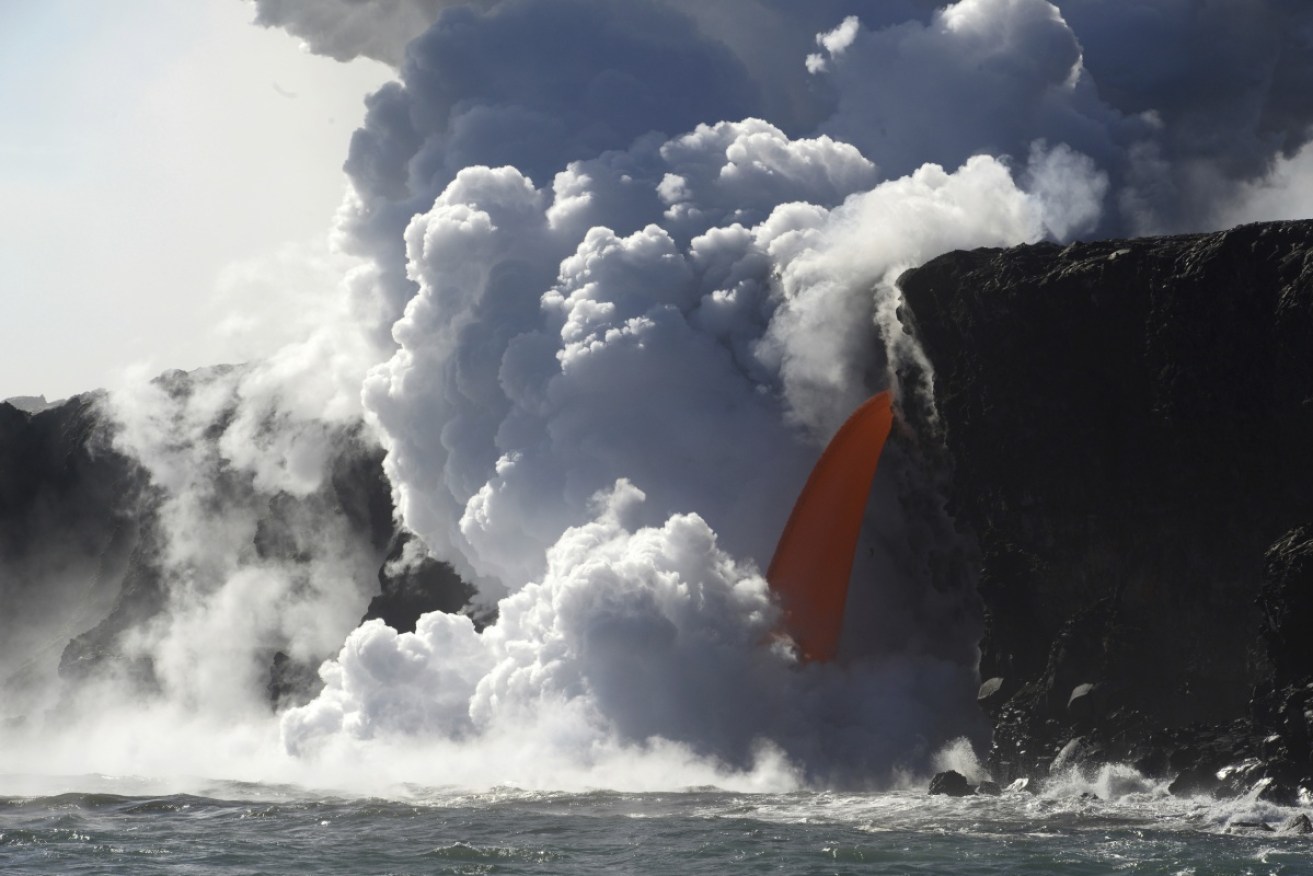Massive lava stream exploding into ocean in Hawaii

A "firehose" lava stream from Kilauea Volcano shoots out from a sea cliff on Hawaii's Big Island. Photo: Shane Turpin/Lava Ocean Tours/AP
A dramatic “firehose” stream of molten lava is continuing to shoot out of a sea cliff on Hawaii Island, splashing into the Pacific Ocean below and exploding upon impact.
The massive Kilauea flow has been coming from a lava tube at the Kamokuna ocean entry on the south-east side of the Big Island.
The lava is gushing from a tube that was exposed when a huge, 10.5-hectare lava delta collapsed into the ocean at the site on New Year’s Eve.
Massive explosions and giant waves were triggered in the area by the collapse of the newly-formed land.
Dubbed a “firehose”, the lava stream flows because it shoots lava outward from the source.
It started out as a drizzle coming down the sea cliffs after the New Year collapse, but has recently increased in intensity.
The molten lava is now arching out and falling about 20 metres to the ocean below.
Onlookers ‘taking lives into own hands’
When the molten lava hits the cool seawater, it reacts, causing explosions that can throw large chunks of hot rock and debris inland, where people hike in to see the lava, and seaward, where tour boats cruise the shoreline.
Lava bench collapses can happen at any time without warning and if someone was on the edge during a collapse “it would likely be a fatality”, said Cindy Orlando, superintendent of Hawaii Volcanoes National Park.
Despite signs and roped-off areas, people still cross the boundaries and go to the edge of the cliffs near the lava flow, Ms Orlando said.
Park rangers have recently issued citations to people who cross into prohibited areas, but Ms Orlando said it was nearly impossible to prevent everyone from breaking the rules.
Scientists fear explosions if ‘hot crack’ triggers collapse
One of the biggest concerns is a large “hot crack” in the rock above the firehose flow, USGS geologist Janet Babb said.
The crack runs parallel to the sea cliff and makes the surrounding land susceptible to collapse.
When the large delta collapsed on December 31, it sent hot rocks and lava spatter flying into the air and giant waves outward.
“The seaward side of that crack could fall away,” said Ms Babb, who works at the Hawaii Volcano Observatory.
“That is of great concern because if it does, it’s going to drop a lot of hot rock into the water and hot rock mixing with cool seawater makes for explosive interactions.”
The steam plume created by the lava reaching the water is also a concern.
“It’s super-heated steam laced with hydrochloric acid from the interaction with the seawater and has shards of volcanic glass,” Ms Babb said.
“It’s something to be avoided.”
Ms Babb said the firehose event is unusual because it has lasted so long. Usually when a flow opens up like this, the lava quickly builds new land below and plugs the entry.
“In this case, there’s no evidence of a new delta is forming, which leads us to believe that the offshore topography there is very steep,” she said.
Kilauea has been erupting continuously since 1983, and the most recent vent flow reaching the ocean has been ongoing for months.
“There’s no indication of it slowing down or stopping,” Ms Babb said.
-AP








